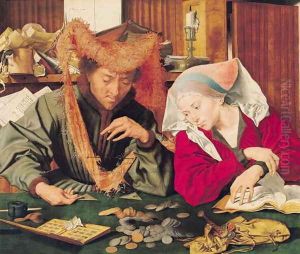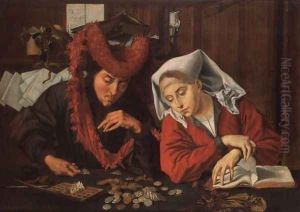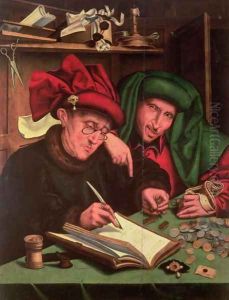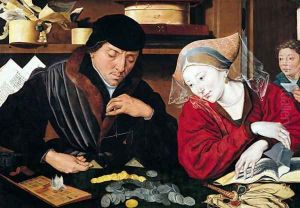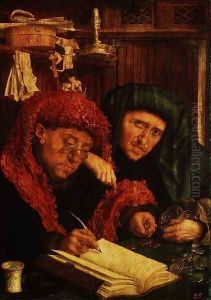Marinus van Roejmerswaelen Paintings
Marinus van Reymerswaele, also known as Marinus van Roejmerswaelen, was a Dutch Renaissance painter whose works primarily focused on religious themes and portraits, though he is especially recognized for his depictions of tax collectors. Born around 1490 in the town of Reimerswaal, from which his surname is derived, Marinus developed a highly detailed and refined style that was characteristic of Northern Renaissance art.
Marinus did not come from an artistic family; rather, he was the son of a town clerk. He is believed to have studied in Antwerp, where he would have been exposed to the works of leading artists of the time. By 1509, he became a master in the painters' guild of Antwerp, a major center of artistic production. During his career, he became known for his meticulous attention to detail and his ability to capture the textures and surfaces of materials such as metals, glass, and textiles.
While there are no surviving documents to provide a complete account of his life, Marinus's works offer insight into his artistic concerns. His genre scenes of tax collectors are particularly noteworthy for their satirical portrayal of the figures, often seen as critiques of greed and moral decay. These paintings are characterized by their fine detail, vivid characterization, and use of symbolism.
Marinus's religious works, meanwhile, demonstrate his ability to convey complex theological ideas through art. His altarpieces and paintings of saints reflect a deep engagement with the spiritual and doctrinal concerns of his time.
The exact year of Marinus van Reymerswaele's death is not known, but it is presumed he died around 1566. His works can be found in various museums across Europe, and they continue to be studied for their unique blend of religious piety, social commentary, and technical mastery.
